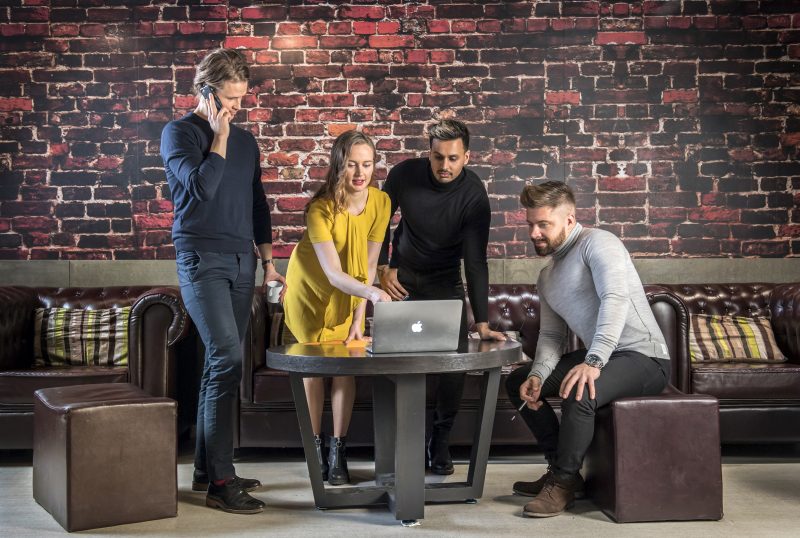You have just managed to get out ‘alive’ from a meeting thinking you would have died of boredom if that colleague of yours – bless him – hadn’t pointed out the obvious: we’re an hour over the agreed time and we all actually have a thing called ‘work’ to go back to! Towards the end, words were just whirling around you, making no sense. Your attention span was way overdue and the only thing you could think about was your shopping list! You should always keep your meeting within the agreed time schedule to avoid boredom.
You’re not alone in feeling that many meetings are not productive and go over their scheduled time. A mindblowing one third of meetings are found to not make the best use of the meeting time, and 37% of them also start late. Meetings serve a purpose and make you feel like you get something out of them. When you manage to stick to the timeframe and end meetings on time, your colleagues will value your meetings more. Make sure everyone can actually see the results of the meeting and there is follow up afterwards.
So, what to do to avoid another painstakingly long meeting? It would be nice to have everyone free to go back to work, home, to the gym or for drinks on time!
1. Make Sure the Meeting Agenda is Clear and Give Each Item an Allocated Time Slot
Purposeless meetings tend to be longer and that automatically lowers the level of commitment of the participants. The ‘why are we meeting’, should always be addressed by the organiser. Also, it could involve some input beforehand from all the participants. List down all your meeting agenda items and give each item a tentative timeslot, for instance “reviewing of last week’s meeting minutes, 10 minutes”. This way you are able to map out better the time requirement for your meeting in order to go through all your objectives.
2. Make it a Habit to Start Your Meetings Always on Time
It is not acceptable to arrive late to a meeting and expect everyone to wait. Make it a habit that your meetings start on time and always be on time to other people’s meetings too. Slowly your colleagues will learn that you are precise, and they will find you sharper and focused as a person too. You can make a rule that the meeting door is shut after the meeting starts for the first 5-10 minutes. Afterwards you can open the door one time to let the late comers come inside and join you in one go. To have someone continuously walk through the door is disturbing and takes away the focus, hence it’s better to limit the walk-ins to a minimum.
3. Make Every Meeting Minute Count: Cut the Ineffectiveness and Come Prepared
You should not be sitting in the room if you are not going to contribute. Meetings are for sharing and gathering information. If you are the meeting organiser, share the agenda in advance and ask everyone to take 15 minutes to come prepared with comments and to review the suggested agenda. Ask them to write down thoughts and questions they may have and consequently everyone can make the most of the time at hand.
4. Timing: Have Someone Track the Meeting Time
Timing is essential: ask for someone to keep track of time. If the meeting is supposed to last for one hour, the timer can alert when the meeting is halfway through. Similarly, they alert once you have 15, 10 and finally 5 minutes to go. If you still have some incumbent issues that need to be tackled, rather than hurriedly reviewing them, it’s naturally better to schedule a different meeting. Everyone’s calendar is sensibly planned. If the allocated time was one hour, there surely is somewhere else that person needs to be afterward. Who knows, maybe he or she has to attend another meeting?
Last piece of advice: everyone’s turn is precious of course, but try to time it to 2 minutes for each participant. Wondered why debate competitions always end on time? Likewise, ask your participants to let you know in advance if they want to add items on the meeting agenda. As a result, you have enough time allocated for each item and you are focused on the real issues.
5. Dedicate the Meeting Time Only to the People Relevant to the Discussion
Too many cooks spoil the broth.
As a consequence of point 2, remember to invite only the people that are going to contribute in the room. If they have no updates to give, expertise to share on the meeting topic, or if their decision making is not required, leave them out of the meeting and save their time too. Having too many people in the room will get you sidetracked. The meeting minutes and follow up action log can then be sent to colleagues, but during the meeting, focus on the core team.
6. Write Efficient Meeting Minutes and Follow up Action Points
Task one of the participants with keeping track of meeting minutes and prepare the meeting minute log in advance. Granted that efficient meeting minutes are tracked, you will be able to follow up and track your meeting outcomes more in-depth. Meeting minutes should at least consist of made decisions, important open tasks and the owners and the deadline for each action item.
7. Standing Keeps Your Meetings Within the Agreed Time Schedule
If there is the need to meet but the time is limited, try a standing meeting. In a standing meeting, nobody is allowed to sit for any reason whatsoever. After a while, everyone will start to feel uncomfortable and the matter will be handled quicker. If you’re sitting down long in a comfortable office chair, your body will automatically start feeling sleepy and unfocused. Standing up will keep you focused and more energized. This trick could also work when you’re running overtime! Ask everyone to stand up and comments will become shorter. As a result, ending the meeting will be a breeze. However, make sure the quality of the conversation still remains high and don’t make hasty decisions just to make decisions.
8. Keep the Focus and Time to Have Meetings Within the Agreed Time Schedule
It often happens that someone is keen on sharing too many details that could perfectly be discussed afterwards. Your job as the organiser is to make sure you stay on topic. Hence unrelated matters have to be blocked before everyone starts voicing an opinion. You can have a rule: if your point doesn’t require decision making, it can be left outside for the coffee room chat or to emails. Otherwise you can also ask the participant: what input do you expect from the others to add to your point? There has to be a clear input-output relation to each item you discuss.
How Does a Good Manager Lead People in Meetings?

Photo by Ahmed Saffu on Unsplash





